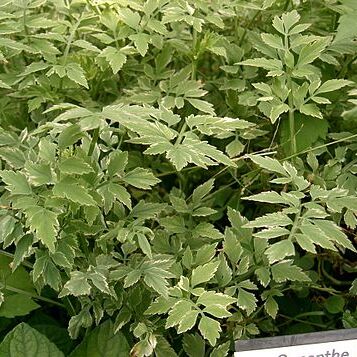Perennial. Stems 10-100 cm, erect or ascending from a creeping base, terete, ramose. Petioles to 10 cm, often with sheaths; lamina pinnate to bipinnate, segments ovate, serrate to narrowly oblong, or divided again, this making the leaf 4-5-pinnate. Umbels terminal and opposite the leaves; peduncles 1-20 cm, rarely none; rays 5-15, ½-3 cm; pedicels 10-25, 2-5 mm; involucres none or 1; involucels 2-8, 2-4 mm, linear. Calyx teeth nearly ½ mm, acute. Petals nearly 1 by ¾ mm. Mericarps 2-3 by ½-1 mm, ribs swollen, marginal much more than the dorsal ones, the latter if strongly swollen nearly confluent.
A herb. This plant is a hollow stemmed creeping green leafy vegetable. The stem is often up to 100 cm long and normally lies along the ground and turns up near the tip. The leaves are finely divided like carrot tops but the size, shape and colour of the leaves can vary quite a bit, even on the one plant. The leaves often have leaf sheaths which wrap around the stem. The flowers occur at the ends of the branches and are a group of small white flowers. Several kinds occur with different colours and leaf sizes. It mostly grows near water and will float on water.


